- Home
- H. P. Lovecraft
The Complete H.P. Lovecraft Collection (Xist Classics) Page 27
The Complete H.P. Lovecraft Collection (Xist Classics) Read online
Page 27
2.
Young Ward came home in a state of pleasant excitement, and spent the following Saturday in a long and exhaustive study of the house in Olney Court. The place, now crumbling with age, had never been a mansion; but was a modest two-and-a-half story wooden town house of the familiar Providence colonial type, with plain peaked roof, large central chimney, and artistically carved doorway with rayed fanlight, triangular pediment, and trim Doric pilasters. It had suffered but little alteration externally, and Ward felt he was gazing on something very close to the sinister matters of his quest.
The present negro inhabitants were known to him, and he was very courteously shewn about the interior by old Asa and his stout wife Hannah. Here there was more change than the outside indicated, and Ward saw with regret that fully half of the fine scroll-and-urn overmantels and shell-carved cupboard linings were gone, whilst much of the fine wainscotting and bolection moulding was marked, hacked, and gouged, or covered up altogether with cheap wall-paper. In general, the survey did not yield as much as Ward had somehow expected; but it was at least exciting to stand within the ancestral walls which had housed such a man of horror as Joseph Curwen. He saw with a thrill that a monogram had been very carefully effaced from the ancient brass knocker.
From then until after the close of school Ward spent his time on the photostatic copy of the Hutchinson cipher and the accumulation of local Curwen data. The former still proved unyielding; but of the latter he obtained so much, and so many clues to similar data elsewhere, that he was ready by July to make a trip to New London and New York to consult old letters whose presence in those places was indicated. This trip was very fruitful, for it brought him the Fenner letters with their terrible description of the Pawtuxet farmhouse raid, and the Nightingale-Talbot letters in which he learned of the portrait painted on a panel of the Curwen library. This matter of the portrait interested him particularly, since he would have given much to know just what Joseph Curwen looked like; and he decided to make a second search of the house in Olney Court to see if there might not be some trace of the ancient features beneath peeling coats of later paint or layers of mouldy wall-paper.
Early in August that search took place, and Ward went carefully over the walls of every room sizeable enough to have been by any possibility the library of the evil builder. He paid especial attention to the large panels of such overmantels as still remained; and was keenly excited after about an hour, when on a broad area above the fireplace in a spacious ground-floor room he became certain that the surface brought out by the peeling of several coats of paint was sensibly darker than any ordinary interior paint or the wood beneath it was likely to have been. A few more careful tests with a thin knife, and he knew that he had come upon an oil portrait of great extent. With truly scholarly restraint the youth did not risk the damage which an immediate attempt to uncover the hidden picture with the knife might have done, but just retired from the scene of his discovery to enlist expert help. In three days he returned with an artist of long experience, Mr. Walter C. Dwight, whose studio is near the foot of College Hill; and that accomplished restorer of paintings set to work at once with proper methods and chemical substances. Old Asa and his wife were duly excited over their strange visitors, and were properly reimbursed for this invasion of their domestic hearth.
As day by day the work of restoration progressed, Charles Ward looked on with growing interest at the lines and shades gradually unveiled after their long oblivion. Dwight had begun at the bottom; hence since the picture was a three-quarter-length one, the face did not come out for some time. It was meanwhile seen that the subject was a spare, well-shaped man with dark-blue coat, embroidered waistcoat, black satin small-clothes, and white silk stockings, seated in a carved chair against the background of a window with wharves and ships beyond. When the head came out it was observed to bear a neat Albemarle wig, and to possess a thin, calm, undistinguished face which seemed somehow familiar to both Ward and the artist. Only at the very last, though, did the restorer and his client begin to gasp with astonishment at the details of that lean, pallid visage, and to recognise with a touch of awe the dramatic trick which heredity had played. For it took the final bath of oil and the final stroke of the delicate scraper to bring out fully the expression which centuries had hidden; and to confront the bewildered Charles Dexter Ward, dweller in the past, with his own living features in the countenance of his horrible great-great-great-grandfather.
Ward brought his parents to see the marvel he had uncovered, and his father at once determined to purchase the picture despite its execution on stationary panelling. The resemblance to the boy, despite an appearance of rather greater age, was marvellous; and it could be seen that through some trick of atavism the physical contours of Joseph Curwen had found precise duplication after a century and a half. Mrs. Ward’s resemblance to her ancestor was not at all marked, though she could recall relatives who had some of the facial characteristics shared by her son and by the bygone Curwen. She did not relish the discovery, and told her husband that he had better burn the picture instead of bringing it home. There was, she averred, something unwholesome about it; not only intrinsically, but in its very resemblance to Charles. Mr. Ward, however, was a practical man of power and affairs—a cotton manufacturer with extensive mills at Riverpoint in the Pawtuxet Valley—and not one to listen to feminine scruples. The picture impressed him mightily with its likeness to his son, and he believed the boy deserved it as a present. In this opinion, it is needless to say, Charles most heartily concurred; and a few days later Mr. Ward located the owner of the house—a small rodent-featured person with a guttural accent—and obtained the whole mantel and overmantel bearing the picture at a curtly fixed priced which cut short the impending torrent of unctuous haggling.
It now remained to take off the panelling and remove it to the Ward home, where provisions were made for its thorough restoration and installation with an electric mock-fireplace in Charles’s third-floor study or library. To Charles was left the task of superintending this removal, and on the twenty-eighth of August he accompanied two expert workmen from the Crooker decorating firm to the house in Olney Court, where the mantel and portrait-bearing overmantel were detached with great care and precision for transportation in the company’s motor truck. There was left a space of exposed brickwork marking the chimney’s course, and in this young Ward observed a cubical recess about a foot square, which must have lain directly behind the head of the portrait. Curious as to what such a space might mean or contain, the youth approached and looked within; finding beneath the deep coatings of dust and soot some loose yellowed papers, a crude, thick copybook, and a few mouldering textile shreds which may have formed the ribbon binding the rest together. Blowing away the bulk of the dirt and cinders, he took up the book and looked at the bold inscription on its cover. It was in a hand which he had learned to recognise at the Essex Institute, and proclaimed the volume as the “Journall and Notes of Jos: Curwen, Gent., of Providence-Plantations, Late of Salem.”
Excited beyond measure by his discovery, Ward shewed the book to the two curious workmen beside him. Their testimony is absolute as to the nature and genuineness of the finding, and Dr. Willett relies on them to help establish his theory that the youth was not mad when he began his major eccentricities. All the other papers were likewise in Curwen’s handwriting, and one of them seemed especially portentous because of its inscription: “To Him Who Shal Come After, & How He May Gett Beyonde Time & ye Spheres.” Another was in a cipher; the same, Ward hoped, as the Hutchinson cipher which had hitherto baffled him. A third, and here the searcher rejoiced, seemed to be a key to the cipher; whilst the fourth and fifth were addressed respectively to “Edw: Hutchinson, Armiger” and “Jedediah Orne, Esq.”, ‘or Their Heir or Heirs, or Those Represent’g Them’. The sixth and last was inscribed: “Joseph Curwen his Life and Travells Bet’n ye yeares 1678 and 1687: Of Whither He Voyag’d, Where He Stay’d, Whom He Sawe, and What He Learnt.”
3.
We have now reached the point from which the more academic school of alienists date Charles Ward’s madness. Upon his discovery the youth had looked immediately at a few of the inner pages of the book and manuscripts, and had evidently seen something which impressed him tremendously. Indeed, in shewing the titles to the workmen he appeared to guard the text itself with peculiar care, and to labour under a perturbation for which even the antiquarian and genealogical significance of the find could hardly account. Upon returning home he broke the news with an almost embarrassed air, as if he wished to convey an idea of its supreme importance without having to exhibit the evidence itself. He did not even shew the titles to his parents, but simply told them that he had found some documents in Joseph Curwen’s handwriting, “mostly in cipher”, which would have to be studied very carefully before yielding up their true meaning. It is unlikely that he would have shewn what he did to the workmen, had it not been for their unconcealed curiosity. As it was he doubtless wished to avoid any display of peculiar reticence which would increase their discussion of the matter.
That night Charles Ward sat up in his room reading the new-found book and papers, and when day came he did not desist. His meals, on his urgent request when his mother called to see what was amiss, were sent up to him; and in the afternoon he appeared only briefly when the men came to install the Curwen picture and mantelpiece in his study. The next night he slept in snatches in his clothes, meanwhile wrestling feverishly with the unravelling of the cipher manuscript. In the morning his mother saw that he was at work on the photostatic copy of the Hutchinson cipher, which he had frequently shewn her before; but in response to her query he said that the Curwen key could not be applied to it. That afternoon he abandoned his work and watched the men fascinatedly as they finished their installation of the picture with its woodwork above a cleverly realistic electric log, setting the mock-fireplace and overmantel a little out from the north wall as if a chimney existed, and boxing in the sides with panelling to match the room’s. The front panel holding the picture was sawn and hinged to allow cupboard space behind it. After the workmen went he moved his work into the study and sat down before it with his eyes half on the cipher and half on the portrait which stared back at him like a year-adding and century-recalling mirror.
His parents, subsequently recalling his conduct at this period, give interesting details anent the policy of concealment which he practiced. Before servants he seldom hid any paper which he might be studying, since he rightly assumed that Curwen’s intricate and archaic chirography would be too much for them. With his parents, however, he was more circumspect; and unless the manuscript in question were a cipher, or a mere mass of cryptic symbols and unknown ideographs (as that entitled “To Him Who Shal Come After etc.” seemed to be), he would cover it with some convenient paper until his caller had departed. At night he kept the papers under lock and key in an antique cabinet of his, where he also placed them whenever he left the room. He soon resumed fairly regular hours and habits, except that his long walks and other outside interests seemed to cease. The opening of school, where he now began his senior year, seemed a great bore to him; and he frequently asserted his determination never to bother with college. He had, he said, important special investigations to make, which would provide him with more avenues toward knowledge and the humanities than any university which the world could boast.
Naturally, only one who had always been more or less studious, eccentric, and solitary could have pursued this course for many days without attracting notice. Ward, however, was constitutionally a scholar and a hermit; hence his parents were less surprised than regretful at the close confinement and secrecy he adopted. At the same time, both his father and mother thought it odd that he would shew them no scrap of his treasure-trove, nor give any connected account of such data as he had deciphered. This reticence he explained away as due to a wish to wait until he might announce some connected revelation, but as the weeks passed without further disclosures there began to grow up between the youth and his family a kind of constraint; intensified in his mother’s case by her manifest disapproval of all Curwen delvings.
During October Ward began visiting the libraries again, but no longer for the antiquarian matter of his former days. Witchcraft and magic, occultism and daemonology, were what he sought now; and when Providence sources proved unfruitful he would take the train for Boston and tap the wealth of the great library in Copley Square, the Widener Library at Harvard, or the Zion Research Library in Brookline, where certain rare works on Biblical subjects are available. He bought extensively, and fitted up a whole additional set of shelves in his study for newly acquired works on uncanny subjects; while during the Christmas holidays he made a round of out-of-town trips including one to Salem to consult certain records at the Essex Institute.
About the middle of January, 1920, there entered Ward’s bearing an element of triumph which he did not explain, and he was no more found at work upon the Hutchinson cipher. Instead, he inaugurated a dual policy of chemical research and record-scanning; fitting up for the one a laboratory in the unused attic of the house, and for the latter haunting all the sources of vital statistics in Providence. Local dealers in drugs and scientific supplies, later questioned, gave astonishingly queer and meaningless catalogues of the substances and instruments he purchased; but clerks at the State House, the City Hall, and the various libraries agree as to the definite object of his second interest. He was searching intensely and feverishly for the grave of Joseph Curwen, from whose slate slab an older generation had so wisely blotted the name.
Little by little there grew upon the Ward family the conviction that something was wrong. Charles had had freaks and changes of minor interests before, but this growing secrecy and absorption in strange pursuits was unlike even him. His school work was the merest pretence; and although he failed in no test, it could be seen that the old application had all vanished. He had other concernments now; and when not in his new laboratory with a score of obsolete alchemical books, could be found either poring over old burial records down town or glued to his volumes of occult lore in his study, where the startlingly—one almost fancied increasingly—similar features of Joseph Curwen stared blandly at him from the great overmantel on the north wall.
Late in March Ward added to his archive-searching a ghoulish series of rambles about the various ancient cemeteries of the city. The cause appeared later, when it was learned from City Hall clerks that he had probably found an important clue. His quest had suddenly shifted from the grave of Joseph Curwen to that of one Naphthali Field; and this shift was explained when, upon going over the files that he had been over, the investigators actually found a fragmentary record of Curwen’s burial which had escaped the general obliteration, and which stated that the curious leaden coffin had been interred “10 ft. S. and 5 ft. W. of Naphthali Field’s grave in ye—”. The lack of a specified burying-ground in the surviving entry greatly complicated the search, and Naphthali Field’s grave seemed as elusive as that of Curwen; but here no systematic effacement had existed, and one might reasonably be expected to stumble on the stone itself even if its record had perished. Hence the rambles—from which St. John’s (the former King’s) Churchyard and the ancient Congregational burying-ground in the midst of Swan Point Cemetery were excluded, since other statistics had shewn that the only Naphthali Field (obiit 1729) whose grave could have been meant had been a Baptist.
4.
It was toward May when Dr. Willett, at the request of the senior Ward, and fortified with all the Curwen data which the family had gleaned from Charles in his non-secretive days, talked with the young man. The interview was of little value or conclusiveness, for Willett felt at every moment that Charles was thoroughly master of himself and in touch with matters of real importance; but it at least forced the secretive youth to offer some rational explanation of his recent demeanour. Of a pallid, impassive type not easily shewing embarrassment, Ward seemed quite ready to discuss his pursuits, th
ough not to reveal their object. He stated that the papers of his ancestor had contained some remarkable secrets of early scientific knowledge, for the most part in cipher, of an apparent scope comparable only to the discoveries of Friar Bacon and perhaps surpassing even those. They were, however, meaningless except when correlated with a body of learning now wholly obsolete; so that their immediate presentation to a world equipped only with modern science would rob them of all impressiveness and dramatic significance. To take their vivid place in the history of human thought they must first be correlated by one familiar with the background out of which they evolved, and to this task of correlation Ward was now devoting himself. He was seeking to acquire as fast as possible those neglected arts of old which a true interpreter of the Curwen data must possess, and hoped in time to make a full announcement and presentation of the utmost interest to mankind and to the world of thought. Not even Einstein, he declared, could more profoundly revolutionise the current conception of things.
As to his graveyard search, whose object he freely admitted, but the details of whose progress he did not relate, he said he had reason to think that Joseph Curwen’s mutilated headstone bore certain mystic symbols—carved from directions in his will and ignorantly spared by those who had effaced the name—which were absolutely essential to the final solution of his cryptic system. Curwen, he believed, had wished to guard his secret with care; and had consequently distributed the data in an exceedingly curious fashion. When Dr. Willett asked to see the mystic documents, Ward displayed much reluctance and tried to put him off with such things as photostatic copies of the Hutchinson cipher and Orne formulae and diagrams; but finally shewed him the exteriors of some of the real Curwen finds—the “Journall and Notes”, the cipher (title in cipher also), and the formula-filled message “To Him Who Shal Come After”—and let him glance inside such as were in obscure characters.

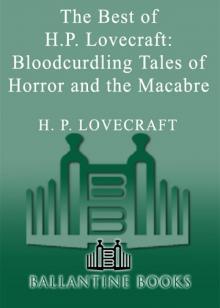 The Best of H.P. Lovecraft
The Best of H.P. Lovecraft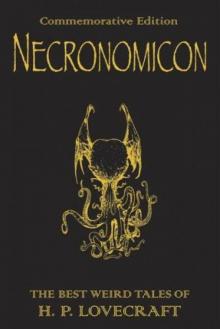 The Definitive H.P. Lovecraft: 67 Tales Of Horror In One Volume
The Definitive H.P. Lovecraft: 67 Tales Of Horror In One Volume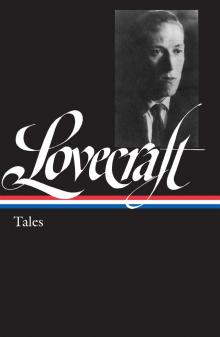 The Complete Works of H.P. Lovecraft
The Complete Works of H.P. Lovecraft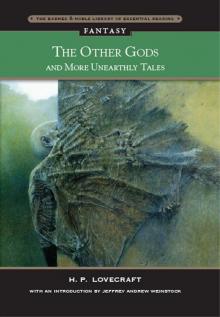 Other Gods and More Unearthly Tales
Other Gods and More Unearthly Tales Lovecraft's Fiction Volume I, 1905-1925
Lovecraft's Fiction Volume I, 1905-1925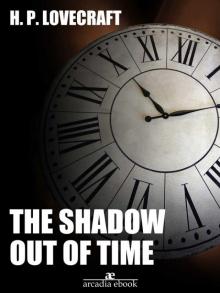 The Shadow Out of Time
The Shadow Out of Time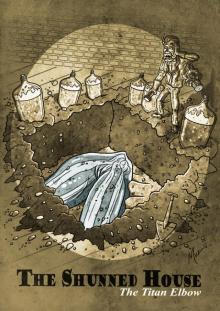 The Shunned House
The Shunned House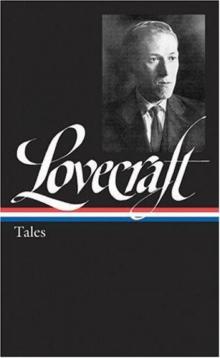 Lovecraft's Fiction Volume II, 1926-1928
Lovecraft's Fiction Volume II, 1926-1928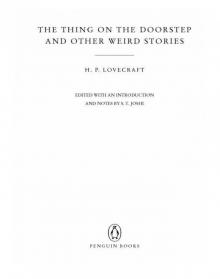 The Thing on the Doorstep and Other Weird Stories
The Thing on the Doorstep and Other Weird Stories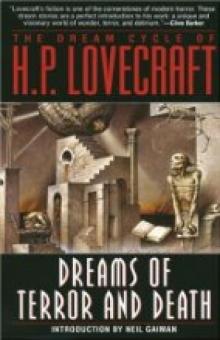 Dream Cycle of H. P. Lovecraft: Dreams of Terror and Death
Dream Cycle of H. P. Lovecraft: Dreams of Terror and Death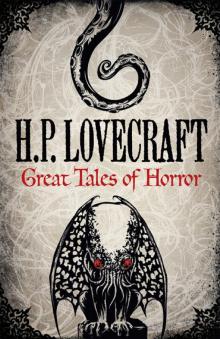 Great Tales of Horror
Great Tales of Horror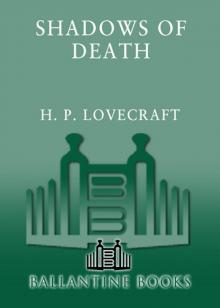 Shadows of Death
Shadows of Death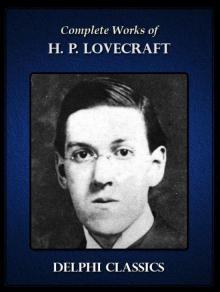 Delphi Complete Works of H. P. Lovecraft (Illustrated)
Delphi Complete Works of H. P. Lovecraft (Illustrated)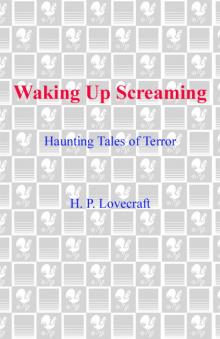 Waking Up Screaming: Haunting Tales of Terror
Waking Up Screaming: Haunting Tales of Terror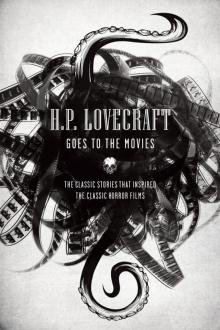 H.P. Lovecraft Goes to the Movies
H.P. Lovecraft Goes to the Movies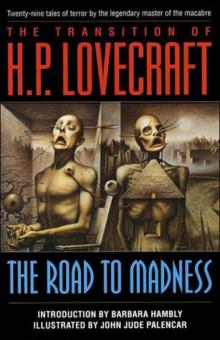 The Road to Madness
The Road to Madness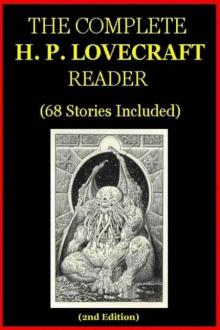 The Complete H.P. Lovecraft Reader (68 Stories)
The Complete H.P. Lovecraft Reader (68 Stories)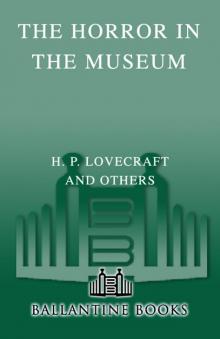 The Horror in the Museum
The Horror in the Museum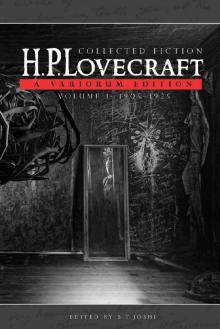 Collected Fiction Volume 1 (1905-1925): A Variorum Edition
Collected Fiction Volume 1 (1905-1925): A Variorum Edition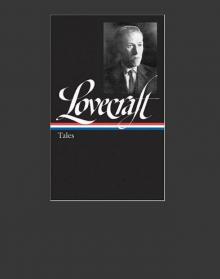 Lovecrafts_Fiction, vol.I_1905-1925
Lovecrafts_Fiction, vol.I_1905-1925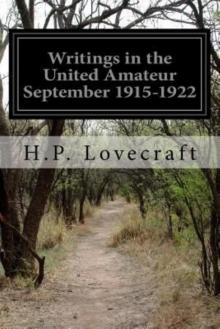 Writings in the United Amateur, 1915-1922
Writings in the United Amateur, 1915-1922 H.P. Lovecraft: The Complete Works
H.P. Lovecraft: The Complete Works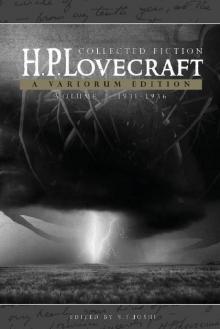 Collected Fiction Volume 3 (1931-1936): A Variorum Edition
Collected Fiction Volume 3 (1931-1936): A Variorum Edition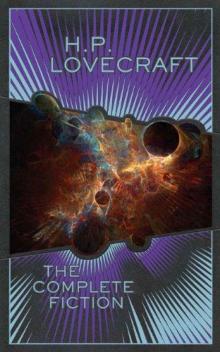 H.P. Lovecraft: The Complete Fiction
H.P. Lovecraft: The Complete Fiction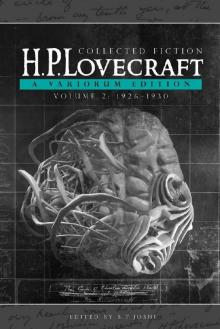 Collected Fiction Volume 2 (1926-1930): A Variorum Edition
Collected Fiction Volume 2 (1926-1930): A Variorum Edition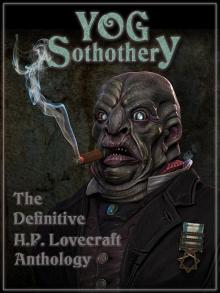 Yog Sothothery - The Definitive H.P. Lovecraft Anthology
Yog Sothothery - The Definitive H.P. Lovecraft Anthology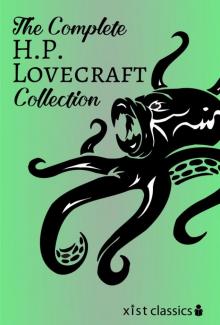 The Complete H.P. Lovecraft Collection (Xist Classics)
The Complete H.P. Lovecraft Collection (Xist Classics)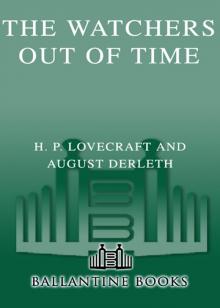 The Watchers Out of Time
The Watchers Out of Time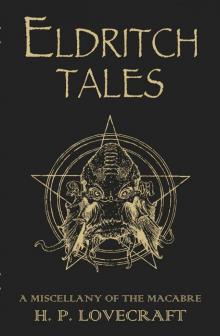 Eldritch Tales
Eldritch Tales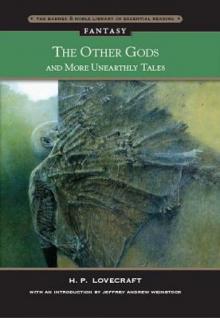 The Other Gods And More Unearthly Tales
The Other Gods And More Unearthly Tales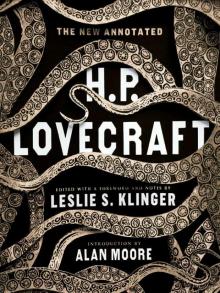 The New Annotated H. P. Lovecraft
The New Annotated H. P. Lovecraft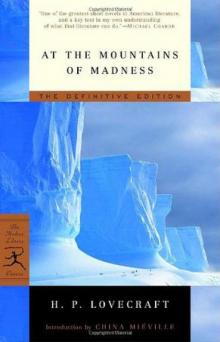 At the mountains of madness
At the mountains of madness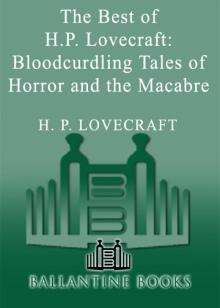 Bloodcurdling Tales of Horror and the Macabre
Bloodcurdling Tales of Horror and the Macabre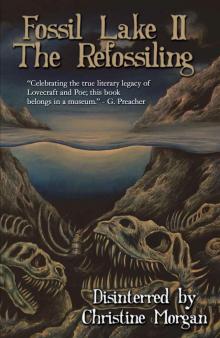 Fossil Lake II: The Refossiling
Fossil Lake II: The Refossiling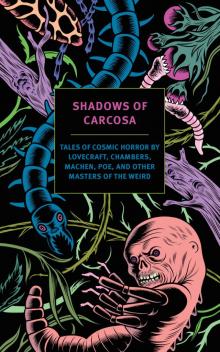 Shadows of Carcosa: Tales of Cosmic Horror by Lovecraft, Chambers, Machen, Poe, and Other Masters of the Weird
Shadows of Carcosa: Tales of Cosmic Horror by Lovecraft, Chambers, Machen, Poe, and Other Masters of the Weird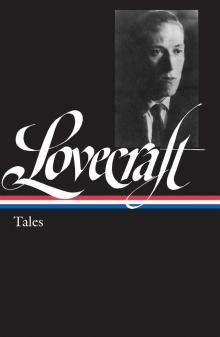 H. P. Lovecraft
H. P. Lovecraft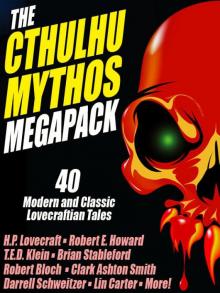 The Cthulhu Mythos Megapack
The Cthulhu Mythos Megapack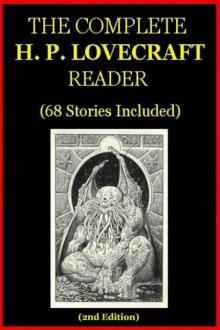 The Complete H. P. Lovecraft Reader (2nd Edition)
The Complete H. P. Lovecraft Reader (2nd Edition)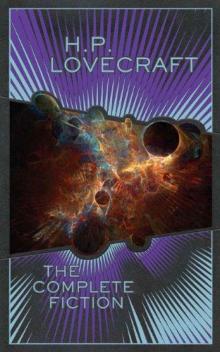 The Complete Fiction
The Complete Fiction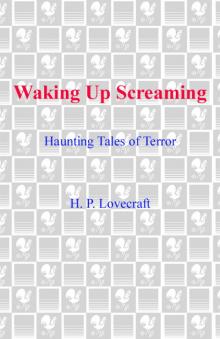 Waking Up Screaming
Waking Up Screaming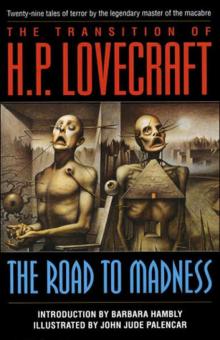 Transition of H. P. Lovecraft
Transition of H. P. Lovecraft![[1935] The Shadow Out of Time Read online](http://i1.bookreadfree.com/i2/04/12/1935_the_shadow_out_of_time_preview.jpg) [1935] The Shadow Out of Time
[1935] The Shadow Out of Time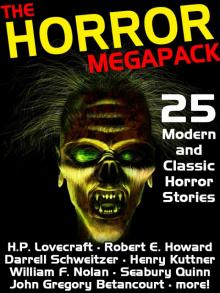 The Horror Megapack
The Horror Megapack